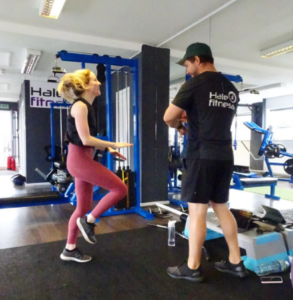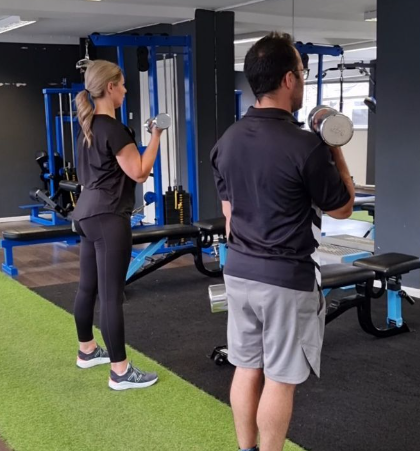Vigorous intensity exercises, both alone and when combined with a dietary intervention result in the greatest improvements in health parameters for PCOS, and moderate intensity exercises result in clear improvements in VO2 peak, waist circumference and BMI when combined with diet.
Some key dietary modifications that can help manage PCOS symptoms are:
Eat a balance, low-GI diet:
- Choose whole grains like brown rice, quinoa and whole wheat bread over refined carbs.
- Limit added sugars, sugary drinks and processed foods high in refined carbs.
- Opt for low-GI fruits like berries, apples and pears.
- Pair carbs with protein and healthy fats to prevent blood sugar spikes.
Increase fibre and protein:
- Eat plenty of high-fibre foods like vegetables, fruits, legumes and whole grains.
- Include lean protein sources like chicken, fish, tofu and eggs.
- Consume anti-inflammatory foods like fatty fish, nuts, seeds and olive oil.
Eat smaller, more frequent meals:
- Eating smaller meals every 3-4 hours can improve insulin sensitivity.
- Avoid skipping meals, especially breakfast.
Stay hydrated:
- Drink plenty of water throughout the day.
- Limit sugary drinks, soda and fruit juices.
Manage portion sizes:
- Be mindful of portion sizes to help with weight management.
- Use a food journal or tracking app to monitor intake.
Supplements:
- Vitamin D, magnesium and chromium supplements may help regulate glucose metabolism.
- Omega-3s from fish oil or flaxseeds can reduce inflammation.
The key is to focus on whole, minimally processed foods, stay hydrated and be mindful of portion sizes. With some trial and error, you can find a balanced diet that helps manage your PCOS symptoms. Consult with your Doctor or registered dietitian for personalised guidance.
Current guidelines for managing PCOS symptoms with physical exercise are recommended to be at least 150 minutes per week, or more specifically:
- A minimum of 120 minutes of vigorous intensity exercise per week is needed to provide favourable health outcomes.
- Aerobic exercise of various intensities has consistently been found to result in improvements in cardiorespiratory fitness (VO2peak), body composition, and insulin sensitivity.
- Resistance training shows promising improvements in free androgen index (FAI) and insulin resistance (HOMA-IR), however we must note that further research is required to confirm these effects.
The Androgen Excess and PCOS Society recommends getting at least 30 minutes of moderate to vigorous activity each day. Examples of exercise that can be incorporated include: 
- Interval training with exercises like squats, jumping jacks, bicep curls and crunches.
- Walking for 30-45 minutes per day on a treadmill or outdoors.
- Aerobic classes like step, dance, boxing, spinning or swimming.
- High-intensity interval training (HIIT) classes.
- Yoga, Pilates or Tai-chi can help reduce stress, improve mood and burn calories to aid weight loss.
A balanced routine with higher intensity days, lower intensity days, and rest days is ideal. The key is to find a combination of exercise types that you enjoy and will do regularly for the best results in managing PCOS symptoms.
A Personal Trainer is an investment in your health and well-being that can lead to long-term positive effects on your fitness, confidence, and overall health. PT Hale prides itself on being a social and safe space where you can work out individually, or with like-minded people to get the results that you want and deserve – LET’S GO!











